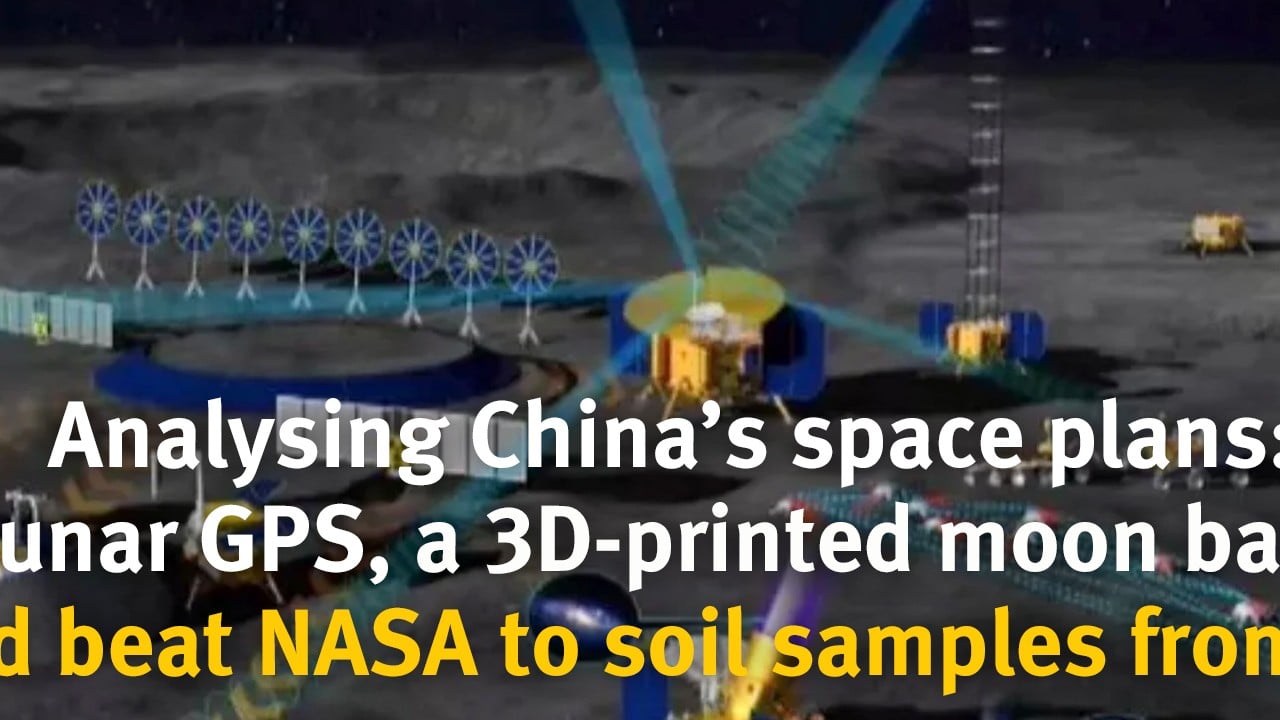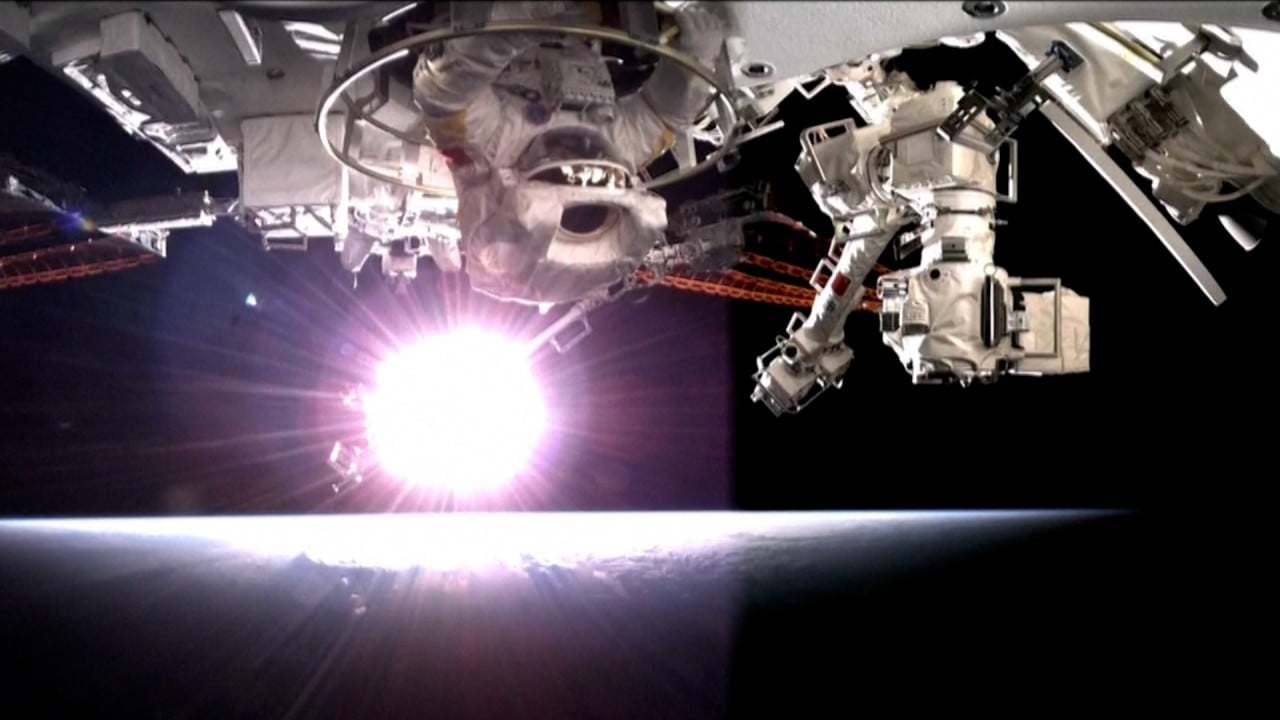The study, published by the peer-reviewed journal Nature Astronomy on Thursday, was based on previous research in the United States into data collected by Nasa’s Messenger, the first spacecraft to orbit the planet.
Mercury is the smallest planet in our solar system, only slightly bigger than the moon. It is also the closest planet to the sun – an average 77 million kilometres (50 million miles) from Earth – and the least studied because it is so difficult to reach.
China shows full structure of Tiangong space station in first panoramic images
China shows full structure of Tiangong space station in first panoramic images
The Messenger probe took nearly seven years to reach the planet, entering orbit around Mercury in 2011, and ended its mission in 2015.
In 2016, a team from the Johns Hopkins University Applied Physics Laboratory determined that carbon was likely to be responsible for Mercury’s dark appearance – a reflection of its geochemistry and key to revealing its origin and evolution.
The carbon probably originated deep below the planet’s surface, “within an ancient, graphite-rich crust that was later buried by volcanic material”, according to the US study published in the peer-reviewed journal Nature Geoscience.
But the latest research suggests the carbon detected by the Messenger mission “may not entirely occur as graphite”, the Chinese scientists said.
“Our results indicate that most carbon on Mercury may occur in forms other than intergrain graphite and that carbon did not entirely drain from the mantle during magma ocean crystallisation,” they wrote.
The researchers noted that the previous study had explained Mercury’s “mysteriously low surface reflectance” on the graphite form of carbon accounting for up to 4 per cent of the weight of deposits covering the planet’s bedrock.
However, their study showed that “a combination of less than 1 per cent [in weight] of microcrystalline graphite and similar amounts of metallic iron is adequate for explaining [the phenomenon]”, they said.
“Crystalline graphite in the hypothesised primary crust may have undergone intensive metamorphism or destruction by post-differentiation surface processes, such as impact bombardment, magmatism and space weathering.”
According to the paper, carbon on Mercury “may mainly occur as nanophase diamonds due to the long-term impact of metamorphism or as amorphous carbon due to space weathering of graphite, both of which are efficient darkening phases”.
Graphite – which is used in pencil leads – is the most stable form of carbon on Mercury’s surface. With extremely high pressure and temperatures of less than 3,000 degrees Celsius (5,432 Fahrenheit), it can be converted into diamond. The reverse occurs between 1,000-1,600C (1,832-2,912F).
Lead author Xiao Zhiyong, a professor with Sun Yat-sen University’s school of atmospheric sciences, said most of Mercury’s graphite may have been transformed into other forms of carbon after more than 4 billion years of weathering.
“If the primary crust of Mercury was made of graphite, we can imagine that the continuous evolution in 4.56 billion years – with countless impact events, mixing and destruction – would have seen most of the early graphite undergo phase changes and become other forms, including diamond,” he said.
Xiao said he was looking forward to the findings of the second mission to Mercury, set to arrive at the planet in December 2025. The high-resolution data it collected could help scientists identify and study meteorites on Earth that had come from the planet, he said.
According to Xiao, meteorites that originated on Mercury could serve as direct evidence of the composition of the planet’s surface until it becomes possible to retrieve samples from the planet itself.
European-Japanese spacecraft BepiColombo captures images of Mercury
European-Japanese spacecraft BepiColombo captures images of Mercury
The European-Japanese mission BepiColombo left Earth in 2018. It will be the second mission to orbit Mercury and the most advanced, according to the European Space Agency, which said learning more about the planet would shed light on the entire solar system’s history.
According to the Japan Aerospace Exploration Agency, once in orbit the probe will observe planetary characteristics such as magnetic fields and plasma environments.
These observations would enable a better understanding of the magnetosphere near the sun and the process of how planets like the Earth were formed, it said.
https://news.google.com/rss/articles/CBMihAFodHRwczovL3d3dy5zY21wLmNvbS9uZXdzL2NoaW5hL3NjaWVuY2UvYXJ0aWNsZS8zMjQ3Mjc3L2NoaW5lc2Utc2NpZW50aXN0cy10aGluay1kaWFtb25kcy1taWdodC1iZS1wcmVzZW50LW15c3RlcmlvdXMtcGxhbmV0LW1lcmN1cnnSAYQBaHR0cHM6Ly9hbXAuc2NtcC5jb20vbmV3cy9jaGluYS9zY2llbmNlL2FydGljbGUvMzI0NzI3Ny9jaGluZXNlLXNjaWVudGlzdHMtdGhpbmstZGlhbW9uZHMtbWlnaHQtYmUtcHJlc2VudC1teXN0ZXJpb3VzLXBsYW5ldC1tZXJjdXJ5?oc=5
2024-01-04 10:00:33Z
CBMihAFodHRwczovL3d3dy5zY21wLmNvbS9uZXdzL2NoaW5hL3NjaWVuY2UvYXJ0aWNsZS8zMjQ3Mjc3L2NoaW5lc2Utc2NpZW50aXN0cy10aGluay1kaWFtb25kcy1taWdodC1iZS1wcmVzZW50LW15c3RlcmlvdXMtcGxhbmV0LW1lcmN1cnnSAYQBaHR0cHM6Ly9hbXAuc2NtcC5jb20vbmV3cy9jaGluYS9zY2llbmNlL2FydGljbGUvMzI0NzI3Ny9jaGluZXNlLXNjaWVudGlzdHMtdGhpbmstZGlhbW9uZHMtbWlnaHQtYmUtcHJlc2VudC1teXN0ZXJpb3VzLXBsYW5ldC1tZXJjdXJ5
Bagikan Berita Ini
















0 Response to "Chinese scientists think diamonds might be present on mysterious planet Mercury - South China Morning Post"
Post a Comment